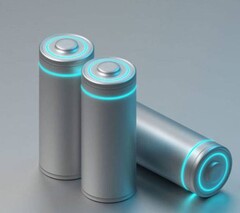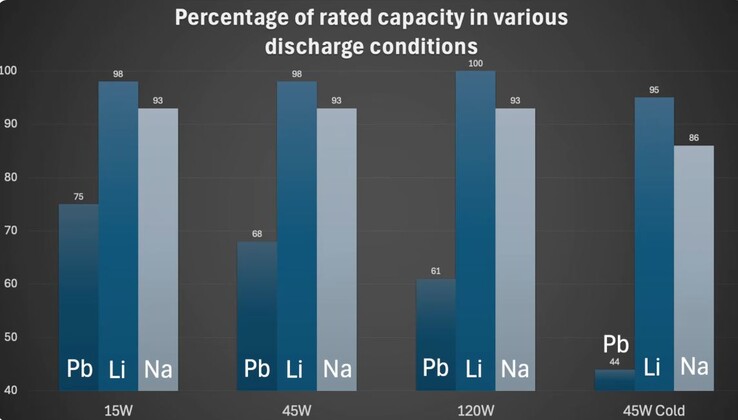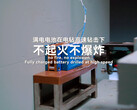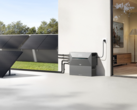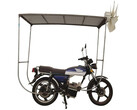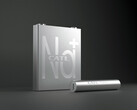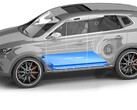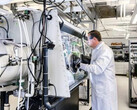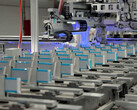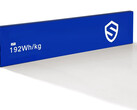Much has been said about sodium-ion batteries and their potential to serve as a widespread alternative to lithium-based battery chemistries. Sodium is much more accessible than its counterparts and, thankfully, also performs well, as demonstrated by a real-world charge and discharge test showing how it compares to other popular battery types.
In a video by Alex Hibbert Originals on YouTube, a sodium-ion battery is tested alongside a lithium iron phosphate (LFP) battery and a lead-acid battery under different conditions. The results are promising. In the first test, the lead-acid battery manages to supply only about 3Ah of its 4Ah rated capacity when discharged at a steady 15W. The 2Ah LFP battery performs excellently, with 1.94Ah being drawn; the 4Ah sodium-ion battery doesn’t quite match the LFP unit but still manages to supply 3.7Ah.
Increasing the discharge load to 45W yields similar results. At effectively a 1C discharge rate, the lead-acid battery delivers only 2.7Ah, or around 68% of its rated 4Ah capacity. The LFP battery provides a full 2Ah, even under a 2C discharge rate, while the sodium-ion battery once again supplies 3.7Ah, or approximately 93% of its rated capacity.
At a 120W discharge load, the lead-acid battery performs even worse, delivering only 2.4Ah—61% of its capacity—under an effective 2C discharge rate. The 2Ah LFP battery performs best again, with a whopping 2.3Ah yielded. That's likely due to the grueling 4C discharge rate faced. The sodium-ion battery maintains its performance, with 3.694Ah being drawn again despite the higher discharge rate.
As a bonus test, all three batteries were discharged in extreme cold conditions (-22°C) with a 45W power draw. The lead-acid battery provided 1.755Ah, the 2Ah LFP battery 1.89Ah, and the 4Ah sodium-ion battery 3.42Ah.
In conclusion, sodium-ion batteries appear to perform in the same ballpark as their LFP counterparts. Across all three standard-temperature tests, the LFP battery delivers effectively 100% of rated capacity even when discharged at over 4C. The sodium-ion battery lags slightly behind at about 93% of capacity. The lead-acid battery, rightfully a far inferior chemistry, only manages around 75% of capacity even at a merciful 0.3C discharge rate.
Seeing as sodium-ion batteries are made from considerably cheaper compounds than LFP batteries, they may well represent the future of energy storage, especially in use cases such as home storage where the chemistry's lower energy density isn't much of an issue. It's important to note, however, that LFP batteries remain cheaper right now due to economies of scale.




